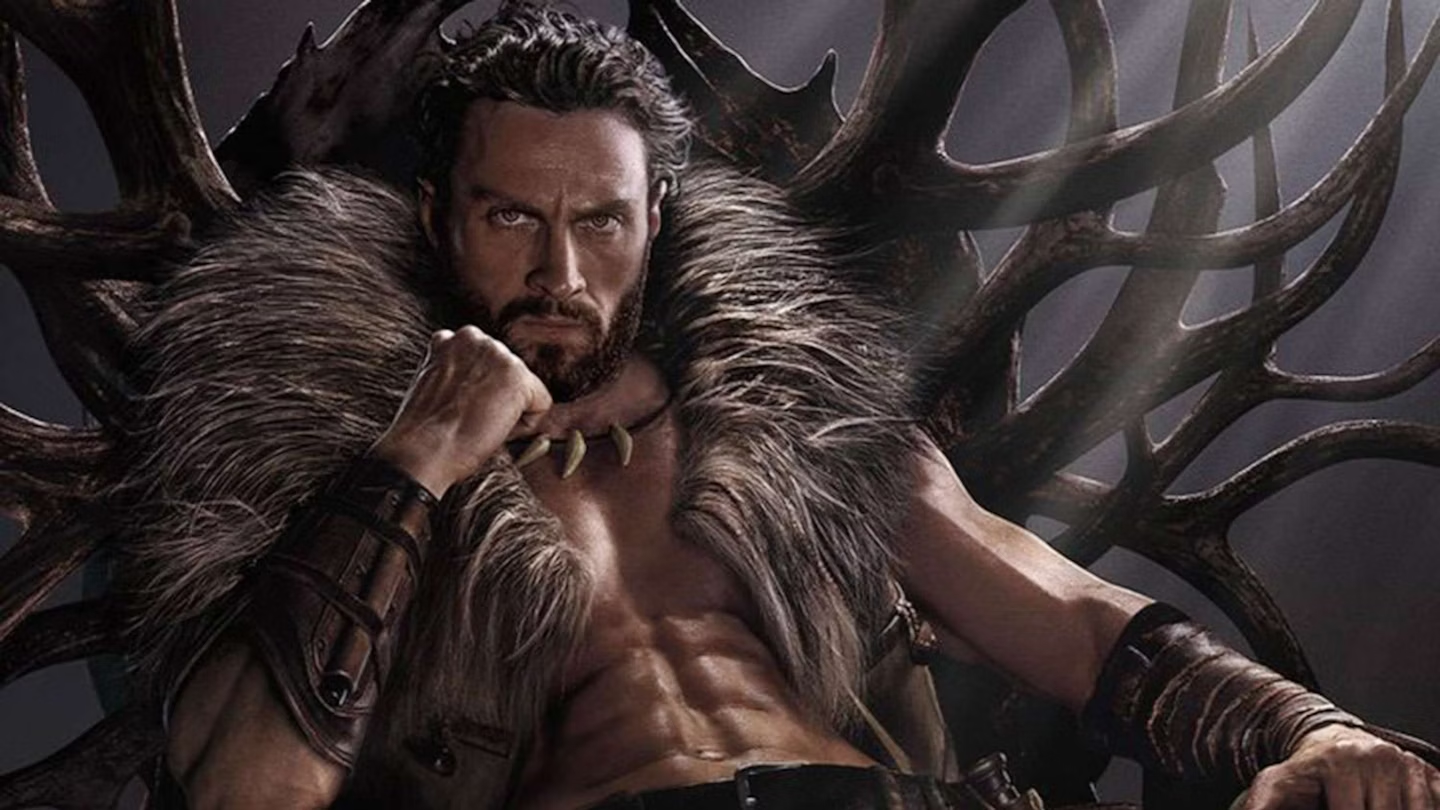Gremlins
You know the rules – no bright light, no water, no food after midnight. Doesn’t seem like a good kind of pet to give your kid, teenager or not, does it? And didn’t Billy Peltzer already have a dog, Buddy the dog who was causing so much trouble with the Lady Grinch of the town, Mrs. Deagle, anyways?
Well, who cares. Rand Peltzer likes the unique and unusual, and his son Billy seems to have inherited his curiosity and kind, well-meaning heart in the bargain. Gizmo, as the cute little Mogwai creature is dubbed, is an adorable bundle of fur with giant anime eyes, who can learn and even talk a bit; seemingly the perfect pet. Yet next thing we know all three rules have been broken and soft fur and giant melty-heart eyes have given way to scales, slitted pupils and a really nasty sense of humor!
Like his dad, Billy is smart and resourceful, and manages to find ways to defeat the Gremlins in this oh-so-very-80’s classic holiday hit. Those little scaly monsters learn to multiply way too fast, which would give any Christmas elf sent against them a run for their money!
The Nightmare Before Christmas
 Apparently most of the major holidays have their own entire worlds, with like-minded denizens who inhabit those worlds and make sure their holiday gets observed in the grandest way possible every year. And who better than the always beloved king of whimsy-goth himself, Tim Burton, to bring Halloweentown to life?
Apparently most of the major holidays have their own entire worlds, with like-minded denizens who inhabit those worlds and make sure their holiday gets observed in the grandest way possible every year. And who better than the always beloved king of whimsy-goth himself, Tim Burton, to bring Halloweentown to life?
As we all know, Jack is our Pumpkin King and he’s the very best at scaring the pants off of everyone in the world. But as it turns out, Jack is tired of his job and is looking for a new one, to actually bring happiness to the peoples of earth. But yknow, when you happen to be a humanoid-ish construct based around a particular holiday, trying to mix another holiday in there is simply unlikely to work. Only our patchwork princess Sally truly understands how Jack feels, and as she’s the only one who really makes sense around this insane asylum, it’s up to her to save Jack from himself! And also, because even Halloweentown has to have an actual villain, Sally is gonna have to help Jack defeat the Boogeyman!
Batman Returns
 People have a tendency to forget that the second Michael Keaton as Batman film took place during Christmas-time in Gotham, because after all, there is so much else going on. The Red Triangle circus gang has descended in all its bloody glory on Gotham again, as has the charismatic freak-o Penguin, I mean, Oswald Cobblepot, ultimately deciding he wants to run for mayor, and a certain secretary that’s had way too much of men trying to kill her, which leads to her feline resurrection as that badass Catwoman. The movie also happens to feature Christopher Walken as the redoubtable Max Shreck, antagonist industrialist titan of Gotham.
People have a tendency to forget that the second Michael Keaton as Batman film took place during Christmas-time in Gotham, because after all, there is so much else going on. The Red Triangle circus gang has descended in all its bloody glory on Gotham again, as has the charismatic freak-o Penguin, I mean, Oswald Cobblepot, ultimately deciding he wants to run for mayor, and a certain secretary that’s had way too much of men trying to kill her, which leads to her feline resurrection as that badass Catwoman. The movie also happens to feature Christopher Walken as the redoubtable Max Shreck, antagonist industrialist titan of Gotham.
The movie is everything my gothic Gotham-loving heart could want, and set during Christmas-time too, which makes it all the more poignant. Murder, revenge, betrayal, more murder, even rocket-suited penguins, and hey, toss some infanticide in there too!
Danny DeVito got the role of Penguin on the recommendation of his friend Jack Nicholson, who had of course played the Joker in the first Keaton-Batman film. Michelle Pfeiffer took kickboxing lessons and practiced with a whip for her role as Catwoman, once accidentally actually cutting her teacher. And for a great easter egg, the role of Penguin’s father in the very beginning of the movie went to Paul Reubens, better known as yes Peewee Herman. (Bonus easter egg twist – Reubens returned to play Penguin’s father once again on the FOX TV show Gotham!)
Jack Frost
 One of the best of the worst of D-grade Horror flicks, Jack Frost boasts a mutant killer snowman antagonist, and I’m not even kidding either. On the way to his execution, the truck ferrying the serial killer Jack Frost crashes into a ‘genetics truck’, mixes the genetic sludge with the snow and turns ol’ Jack into a, wait for it, killer snowman! Of course after that nothing would do but for Jack to go hunting down the Sheriff who caught him, with some of the cheesiest bystander deaths you will ever see in any bad Horror movie.
One of the best of the worst of D-grade Horror flicks, Jack Frost boasts a mutant killer snowman antagonist, and I’m not even kidding either. On the way to his execution, the truck ferrying the serial killer Jack Frost crashes into a ‘genetics truck’, mixes the genetic sludge with the snow and turns ol’ Jack into a, wait for it, killer snowman! Of course after that nothing would do but for Jack to go hunting down the Sheriff who caught him, with some of the cheesiest bystander deaths you will ever see in any bad Horror movie.
I know – the special effects are bad, the movie is poorly shot and what story there is, is laughingly awful. Nevertheless, it’s a mutant killer snowman and the way Scott MacDonald cackles for his voice is just hilarious. For anyone who’s ever wanted to knife Christmas with the snowman carrot even once, this one’s for you!
Jack Frost spawned a sequel, Jack Frost 2: Revenge of the Mutant Killer Snowman, which yes I also own and enjoyed. The series was even slated for a third movie, but was cancelled when the actor who played the Sheriff who caught Jack in both films, Christopher Allport, died in an avalanche in 2008.
Krampus
 The legend of Krampus, that anthropomorphic demon that is the antithesis of dear old Saint Nick himself, has been around for a long time of course, but has only really enjoyed ascendance in the last few decades. Krampus comes in the night and takes care of the naughty children, and occasionally adults too, that Santa Claus won’t demean himself to deal with, dispensing coal for the stockings and ruten bundles for the inevitable Christmas beatings about to ensue!
The legend of Krampus, that anthropomorphic demon that is the antithesis of dear old Saint Nick himself, has been around for a long time of course, but has only really enjoyed ascendance in the last few decades. Krampus comes in the night and takes care of the naughty children, and occasionally adults too, that Santa Claus won’t demean himself to deal with, dispensing coal for the stockings and ruten bundles for the inevitable Christmas beatings about to ensue!
So, like oh so many of us during the winter holidays, the Engel family has issues. Max is a bit of a wuss, his mom and dad are a little pretentious-yuppie type, and German grandma Omi, she’s got a death-grip on traditions older than you might think. Aunt Linda and Uncle Howard, they’re a bit too down-home-y for my taste, their kids are animals that dad probably really does wish were boys, and cantankerous old Aunt Dorothy, also known as ‘eyeroll-she’s-here-too’. And inevitably as the family descends their personalities on each-other, the threat that people who are naughty to each-other on Christmas will receive unhappy visitors, becomes terrifyingly real.
Krampus stands out as a Christmas Horror movie by reminding us that there are real consequences to being assholes to people during the holidays. The things you place your faith in, even and perhaps especially as a child, can come back to haunt you as a regretful adult far too easily. And as a marvelous nod to his other glorious film Trick ‘r Treat, director Michael Dougherty snuck Sam’s lollipop weapon into Max’s Halloween stash.

Movie
‘Mufasa: The Lion King’ Will Leave You Breathless

“Mufasa: The Lion King” is a visually stunning addition to the beloved Lion King franchise, offering a fresh and emotionally resonant take on the origins of one of Disney’s most iconic characters. The film beautifully explores Mufasa’s journey, balancing heartfelt moments with touches of comedy that lighten the mood and make the story accessible to audiences of all ages. The animation is breathtaking, capturing the vibrant landscapes and lush environments of the Pride Lands, adding depth to Mufasa’s character and his relationships.
The storytelling is compelling, effectively pulling at the heartstrings while providing insights into Mufasa’s character before he becomes the legendary king. However, the setup for Scar’s betrayal feels somewhat underdeveloped, lacking the deeper motivation that could have enriched their complex brotherly relationship. This missed opportunity leaves a slight gap in understanding Scar’s actions, which could have elevated the dramatic stakes.
The musical score is impressive, featuring memorable songs that enhance the emotional impact of pivotal scenes. While there are several standout tracks, one song, in particular, resonates deeply and is sure to linger in viewers’ minds long after the credits roll. Overall, “Mufasa: The Lion King” is an amazing film and a worthy addition to the Lion King lore that manages to deliver both laughter and tears, offering a rich tapestry of storytelling that fans will appreciate.
Movie
Is ‘Kraven the Hunter’ a Total Letdown?

“Kraven the Hunter,” directed by J.C. Chandor, aims to introduce a beloved Spider-Man villain to the big screen, but unfortunately, it falls short of expectations. The film suffers from noticeable issues, notably an overuse of ADR (Automated Dialogue Replacement), which detracts from the authenticity of the characters’ interactions and contributes to an uneven audio experience. This technical flaw is compounded by rough storytelling that feels disjointed and lacking in coherence, leaving viewers struggling to connect with the narrative.
Aaron Taylor-Johnson delivers a commendable performance as Kraven, showcasing the character’s gritty nature and complex motivations. His portrayal has potential, and it’s evident that he could elevate the character far beyond what is presented with a stronger script and direction. However, the absence of Spider-Man, a central figure in Kraven’s lore, leaves a void that the film struggles to fill. Without this critical connection, the plot meanders and fails to create the tension or stakes that fans of the superhero genre crave.
Additionally, including Rhino as a villain feels like a missed opportunity; he is presented more as a gag character with limited screen time, undermining any sense of threat or depth. For the average moviegoer, “Kraven the Hunter” might entertain but ultimately feels like a mediocre viewing experience. Comic book fans, however, may find disappointment in this lackluster attempt to create a solo character film. Instead of an exhilarating dive into Kraven’s world, the film presents a watered-down version, leaving audiences wishing for a more cohesive vision that honors its comic book roots.
Movie
A Brief Review and History of A Year Without a Santa Claus

A Year Without a Santa Claus, the 1974 stop-motion holiday classic produced by Rankin/Bass, is a heartwarming and whimsical tale that has cemented its place in holiday traditions. Based on Phyllis McGinley’s 1956 book, the story revolves around a disheartened Santa Claus who, feeling unappreciated, decides to take a year off from his Christmas duties. It’s up to Mrs. Claus and a pair of well-meaning elves, Jingle and Jangle, to reignite the Christmas spirit and show Santa the world’s unwavering belief in him.
The movie is beloved for its unforgettable characters, especially the bickering Miser Brothers, Snow Miser and Heat Miser. Their catchy, vaudeville-style musical numbers, “Snow Miser Song” and “Heat Miser Song”, are so iconic they’ve become cultural touchstones, often parodied and celebrated decades later.
Directed by Arthur Rankin Jr. and Jules Bass, the film continues the duo’s tradition of stop-motion magic, blending heartfelt storytelling with quirky humor. The voice cast, featuring Mickey Rooney as Santa and Shirley Booth as Mrs. Claus, delivers standout performances. Booth’s warm narration was her final acting role before retirement, adding a layer of poignancy to the film.
Initially released on December 10, 1974, on ABC, the special didn’t immediately achieve the legendary status of Rudolph the Red-Nosed Reindeer. However, it gained a dedicated following through annual holiday airings, nostalgic appeal, and its distinct charm.
The film’s themes of hope, unity, and rekindling joy remain timeless, making it a perennial favorite for audiences of all ages. Its blend of humor, catchy songs, and a touching message about believing in magic and goodwill ensures its enduring legacy during the holiday season.
For fans of holiday classics, A Year Without a Santa Claus is a must-watch that never fails to warm hearts and spread cheer.

